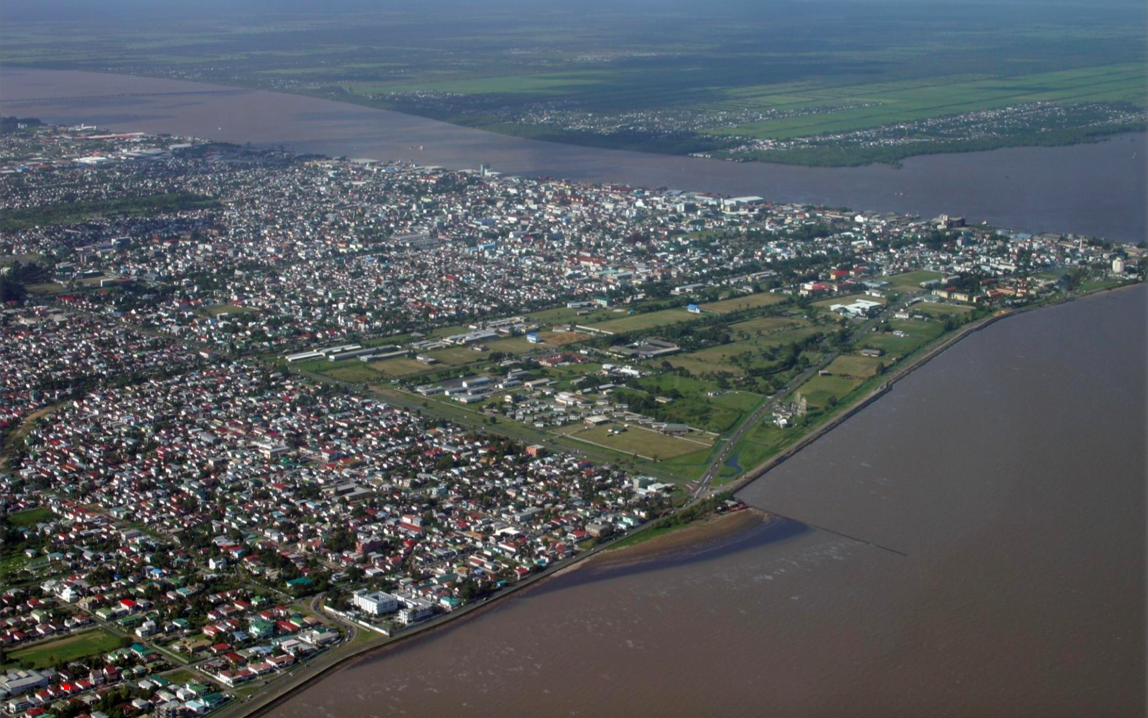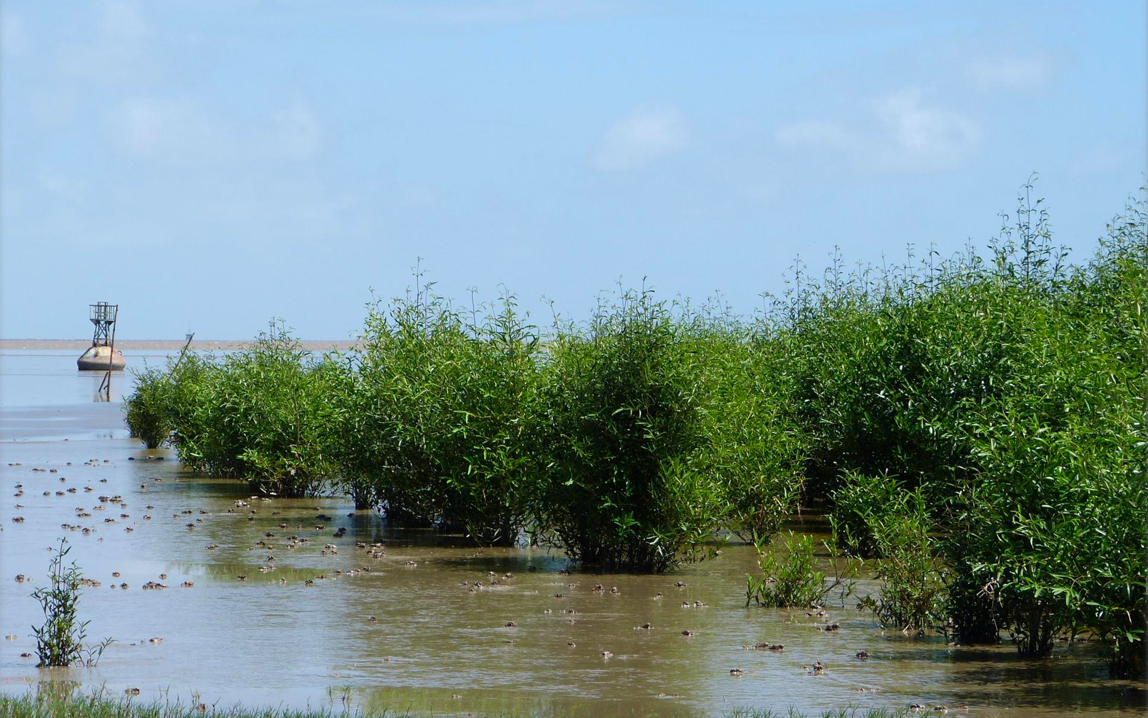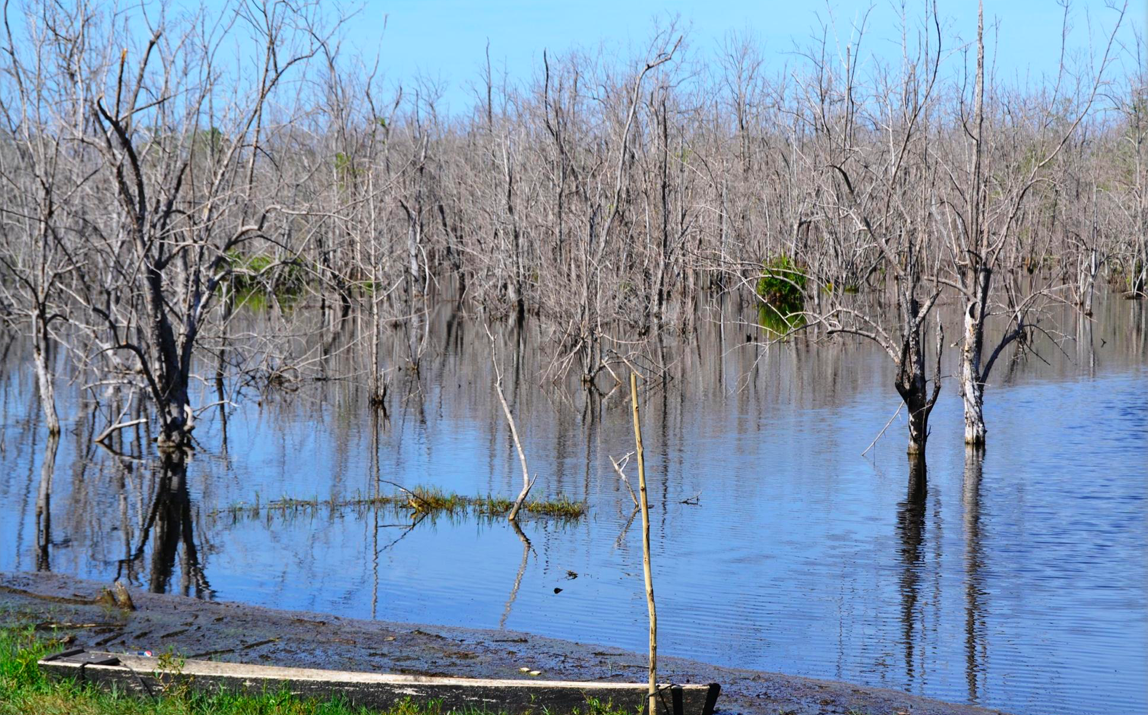Around 90% of Guyana’s population lives in an area that is below sea level, with many inhabiting flood-prone areas along the coast. The coastal plains are also home to about 75% of the country’s economic activities, including almost all of Guyana’s agricultural production. Over the years, degradation and loss of mangrove forests have resulted in increased coastal flooding and saltwater inundation of agricultural land. Mangroves contribute substantially to sea defence in Guyana by damping wave action and reducing wave energy, trapping sediments and stabilizing shoreline substrates while playing an important role in carbon sequestration. The Guyana Mangrove Restoration Project was executed during 2010-2013 under the National Agricultural Research & Extension Institute. Following completion of the Project phase and given the importance of mangroves to Guyana’s coastal defences, mangrove restoration and management were integrated into NAREI (the National Agricultural Research and Extension Institute), a national institution that promotes climate-smart agriculture and resilient citizens. (1,2)
Overview
Nature-based solution
- Blue infrastructure
- Deltas
- Coastlines
- Coastal wetland, mangroves and salt marshes
Key challenges
- Climate action for adaptation, resilience and mitigation (SDG 13)
- Climate change adaptation
- Climate change mitigation
- Coastal resilience and marine protection (SDG 14)
- Coastal protection / hazard mitigation
- Environmental quality
- Soil quality improvement
- Air quality improvement
- Green space, habitats and biodiversity (SDG 15)
- Habitat and biodiversity restoration
- Water management (SDG 6)
- Flood protection
- Inclusive and effective governance (SDG 16)
- Inclusive governance
- Effective management
- Social justice, cohesion and equity (SDG 10)
- Environmental education
Focus
Project objectives
Implementation activities
Climate-focused activities
Climate change adaptation:
- Protect coastal and freshwater ecosystems to prevent coastal erosion and pollution
- Restore wetlands and/or coastal ecosystems to dissipate the effects of flooding and/or storms
Climate change mitigation:
- Improve carbon sequestration through selection of more adaptable species
- Raise public awareness of behaviours, lifestyle and cultural changes with mitigation potential
Biodiversity conservation or restoration-focused activities
Biodiversity restoration:
- Rehabilitate and restore damaged or destroyed ecosystems
- Restore species (native, endangered, or unspecified)
- Public engagement
Main beneficiaries
- National-level government
- Local government/Municipality
- Researchers/University
- Citizens or community groups
Governance
Management set-up
- Government-led
Type of initiating organisation
- National government
- EU body
Participatory approaches/ community involvement
- Dissemination of information and education
- Consultation (e.g. workshop, surveys, community meetings, town halls)
- Joint implementation (e.g. tree planting)
- Co-management/Joint management
- Citizen oversight (e.g. boards, advisory)
Details on the roles of the organisations involved in the project
Project implemented in response to ...
Financing
Total cost
Source(s) of funding
- EU funds
Type of funding
- Direct funding (grants, subsidies, or self-financed projects by private entities)
Non-financial contribution
- Provision of land
- Provision of labour
- Provision of expertise
- Exchange of services
- Public authorities (e.g. land, utility services)
- Citizens (e.g. volunteering)
Impacts and Monitoring
Environmental impacts
- Climate change
- Increased protection against sea level rise
- Environmental quality
- Improved soil quality
- Water management and blue areas
- Enhanced protection and restoration of coastal and marine ecosystems
- Green space and habitat
- Increased green space area
- Increased number of species present
- Enhanced support of pollination
- Other
Economic impacts
- Increase of green jobs (e.g. paid employment positions)
Socio-cultural impacts
- Social justice and cohesion
- Fair distribution of social, environmental and economic benefits of the NBS project
- Increased sustainability of agriculture practices
- Education
- Increased support for education and scientific research
- Increased knowledge of locals about local nature
Type of reported impacts
Presence of formal monitoring system
Presence of indicators used in reporting
Presence of monitoring/ evaluation reports
Availability of a web-based monitoring tool
References
2. Mongabay (2017), Going under: mangrove restoration in low-lying Guyana a vital need, say experts, available at Source link (accessed 3-11-2021)
3. GCCA (no date), Sustainable coastal zone protection through mangrove management in Guyana, available at Source link (accessed 3-11-2021)
4. Mahendra Saywack, University of Sussex, 2013, Mangrove Management in Guyana: A Case of Climate Compatible Development?
Sussex theses ; M 2913, available at Source link (accessed 3-11-2021)
5. The Government of Guyana and the EU, NATIONAL MANGROVE MANAGEMENT ACTION PLAN 2010-2012, available at Source link (accessed 3-11-2021)
6. Guyana Mangrove Restoration Project (2011), GUYANA MANGROVE NURSERY MANUAL, available at Source link (accessed 3-11-2021)
7. Guyana Chronicle (2010), Apiculture and the Honey Mangrove, available at Source link (3-11-2021)





